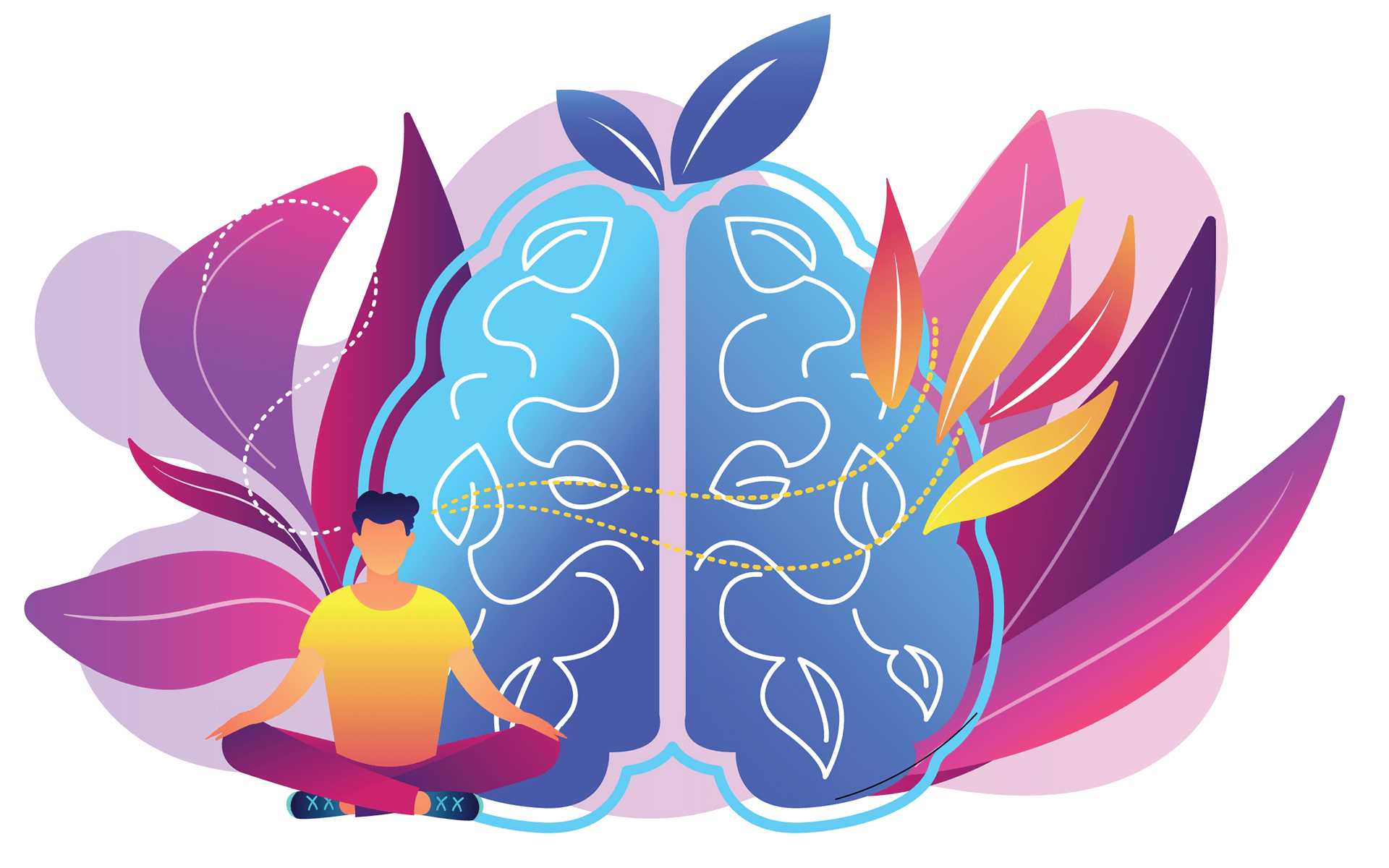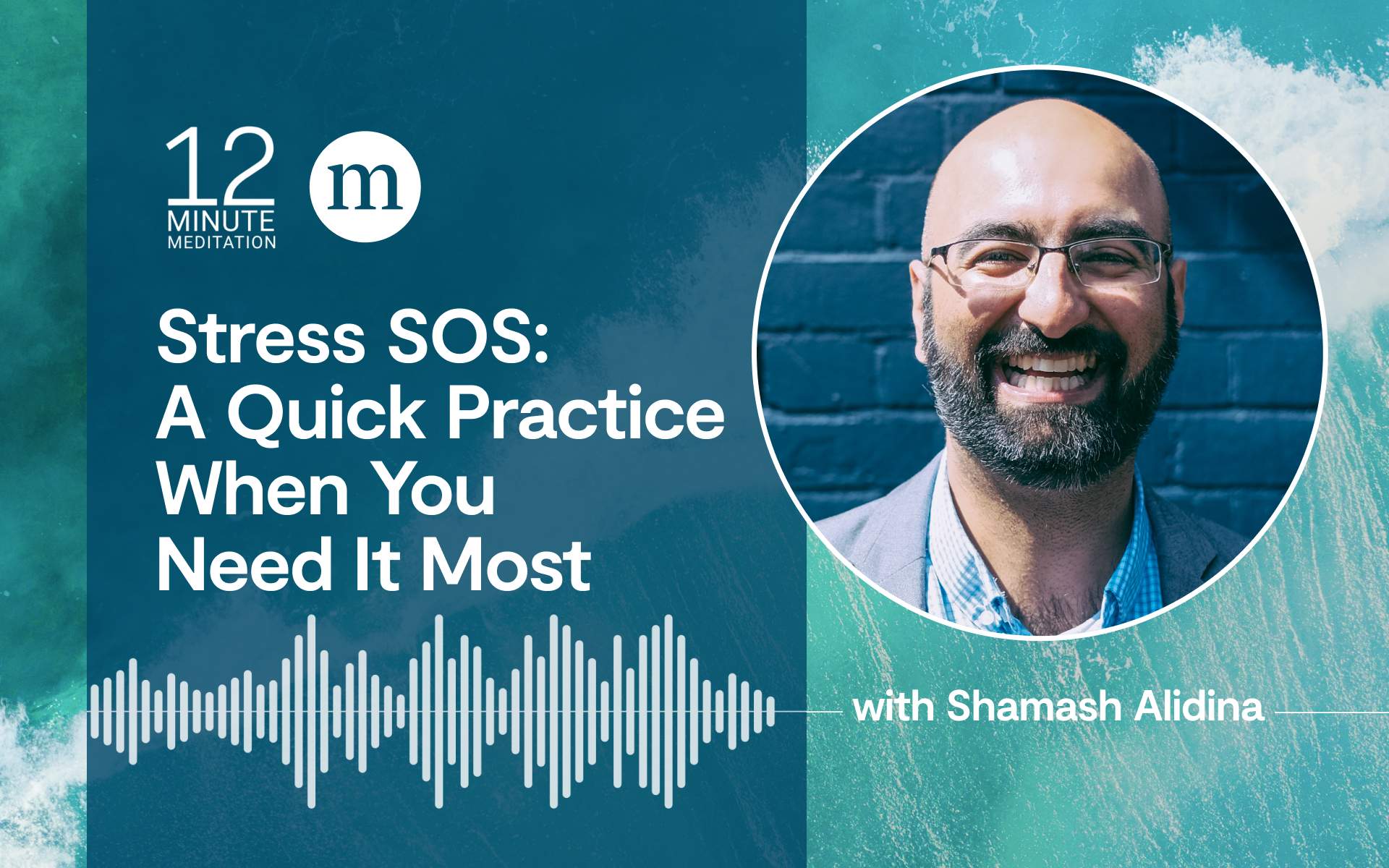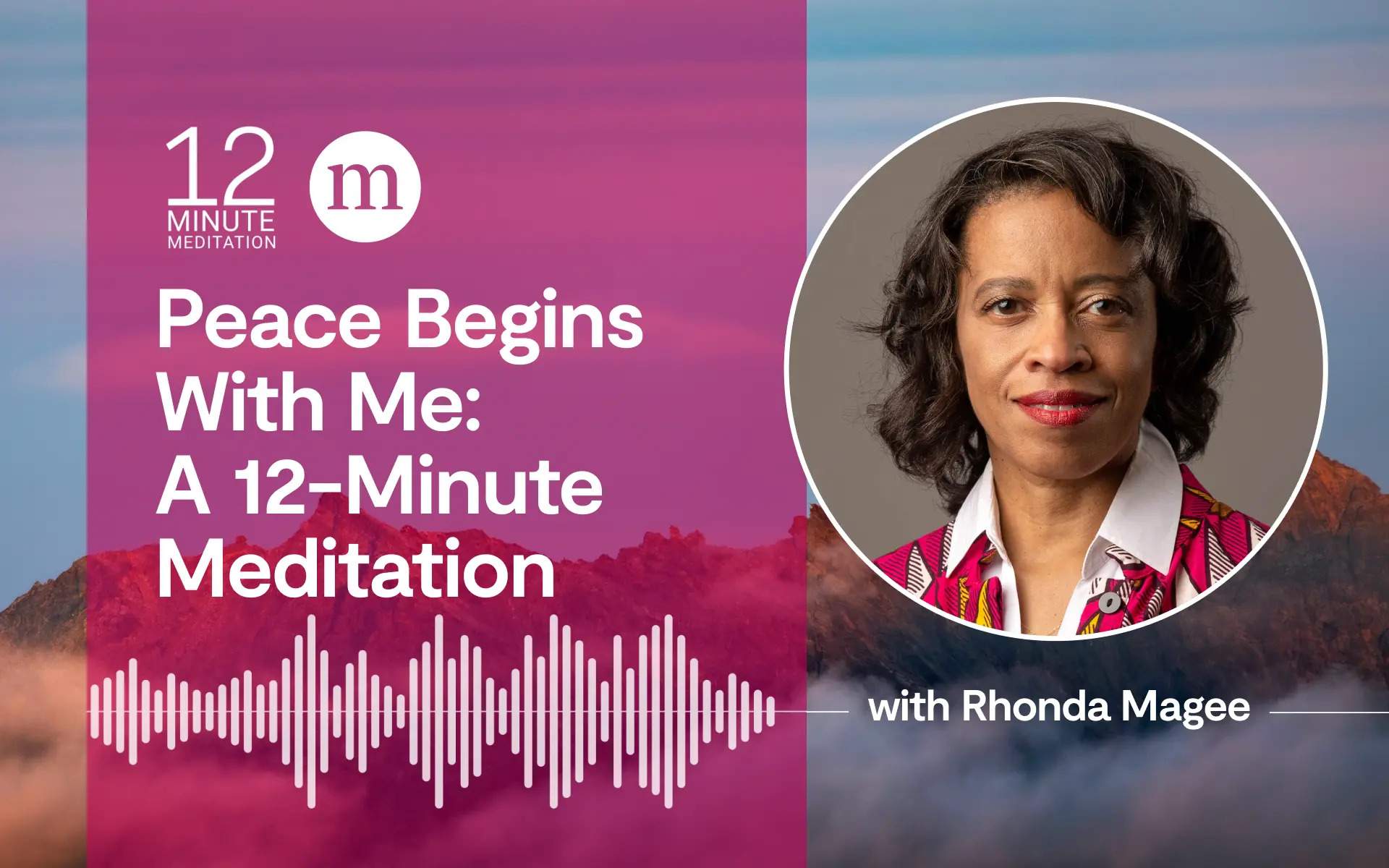The moment of noticing a thought is a very powerful moment. It’s really where the real meditation occurs. That’s because there’s a spark of insight at that point, what in technical terms is called meta-awareness: you’re aware of your thought process, not just caught up in it. Now at that moment, there’s lots of possibility.
You can touch that thought and gently bounce back to attention on the breath and your body. But you might also say “Oh damn, there I go thinking again, I just can’t get away from this thinking and do this meditation.” We call that “entertaining the messenger.” When the messenger comes to the door and says “Hello, here’s the message,” instead of just taking the message—in this case, a cue to bounce back to the breath—we decide to get into a whole argument and keep the messenger around for a while.
Rather than entertaining the messenger or fighting with the messenger, it’s nice if we can just take the message. Thought—breath. And one of the wonderful things about meditation—many people have said this, and Dan Harris for one revels in it—is the fact that it allows for such a monumental amount of failure. Failure is just fine. So, if you’re sitting meditation for 15 minutes and you don’t notice your thought until the bell rings at the end, that’s what that session was about. You learn from it. There will be another one. No big deal.
If you’re trying to get really good at this, and be especially good, especially strict, it’s like pushing on a string. As Frank Ostaseski likes to say, it’s about allowing. Being. Yielding. Letting yourself be there—not trying to make yourself meditate.
Try This Awareness Practice
10-Minute Meditation to Focus the Mind
Posture
Having heard the gong, now settle into your seat, whether it’s on a cushion on the floor, or in a chair, or whatever kind of seat you have: bench, park bench, whatever it is. First, feel your bottom on the seat, and your feet on the floor or the ground, flat, touching the earth. Your eyes can be open or closed, head tilted slightly down—this conveys just a slight feeling of humbleness. Your torso is erect—straight but not stiff. Your shoulders are relaxed, your hands are resting on your thighs and your upper arms are parallel to your torso. Just take a moment to feel that posture.
Breath
Now we’re going to use the breath as an anchor for our attention. We could choose any number of sensations as an anchor for our attention, but breath is convenient because it’s regular and if you’re alive, you’re breathing. We don’t concern ourselves with trying to adjust the rate of the breath, we just come with whatever breath we have.
A good place to start is to take three conscious breaths. For three breaths, let’s be completely aware of the breath as it goes out and comes in, goes out, and comes in, goes out, and comes in.
So now we’re in the room, so to speak. We’re feeling ourselves, seated. We’ve connected with our breath. So now, let’s just keep following the breath as it goes out and in.
If you like, you can use paying attention to the abdomen or your belly, rising and falling. You can pay attention as the breath comes in and out of your nostrils. Or you can simply pay attention to the whole process of breathing in and out.
Thoughts
One of the first things we notice naturally as we try to pay attention to breath coming in and out is our mind is filled with thoughts. It’s like a waterfall of thoughts. Thoughts, thoughts, thoughts—thoughts of all kinds. Sensations. Abstract thoughts. Emotions. Whatever they are, they’re all thoughts, and in mindfulness practice, just notice the thought. Touch it, and go back to the breath. Just a light touch on the thought. It’s almost as if, as you touch the thought, you can bounce off it and back to the breath.
It is that noticing of the thought that is a moment of direct mindfulness. You notice the thought and lightly come back to the breath.
It is that noticing of the thought that is a moment of direct mindfulness. You notice the thought lightly and come back to the breath.
The point of the whole enterprise is not to become an Olympic breath follower— Mindfulness meditation is a lot about familiarity. You’re just spending time with your mind in the simplest possible way, with no project.
We have tremendous perceptive awareness that can capture in an instant what’s going on in our minds. In this case, just noticing without getting caught up particularly. If it’s an emotion—perhaps we’re enraged with someone, they’ve done something very nasty, and it’s not easy to forget, and it comes up, and we ride that train for a while. Maybe as soon as the bell rings, we’re on that rage train and we ride it until the bell comes to end the session. Oh, wow. Whole time on that one thing. Well, it really wasn’t one thing. It was a series of thoughts surrounding the rage. It’s OK.
If something keeps coming up, notice, and then come back to the breath. When we do this repeatedly, this process of touching the thought, there’s a distinct possibility that the thoughts will not grip us as much, that we’ll have more space to choose how we act in response to what’s going on around us and in our mind. This is how the benefits of mindfulness come about. They don’t come about from striving to get benefit: Relax, relax, relax, relax! They come about from following this very simple process. It’s like in Karate Kid: wax on, wax off, wax on, wax off. Eventually, there’s some benefit there—a certain kind of strength emerges.
Finish
As you hear the concluding bell, no matter what’s been going on in the session, you don’t need to evaluate it, just let it go. As you’re hearing the reverberation, open your eyes, and enjoy what’s coming next.
more on mindfulness
A One-Minute Meditation to Focus Your Mind
This guided meditation is meant to be done in the middle of the day, wherever you may be. Read More









